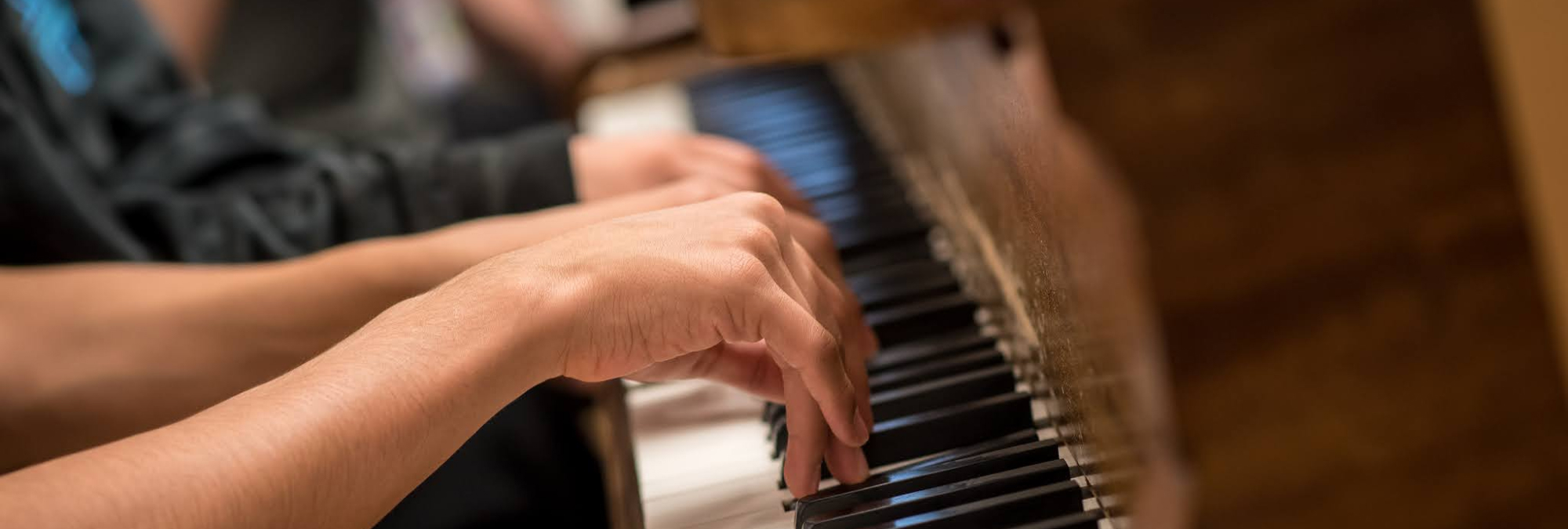Suan Choi, Second Year Masters Piano Recital
Recital
Collaborator
Jason Kim, piano
Robert Schumann (1810-1856)
Piano Sonata No. 3 in F Minor, Op. 14
I. Allegro brillante
II. Scherzo. Molto commodo
III. Quasi variazioni
IV. Prestissimo possible
-Intermission-
Claude Debussy (1862-1918)
Deux Arabesques, L. 66
I. Andantino con moto
II. Allegretto scherzando
Pyotr Illyich Tchaikovsky (1840-1893)
arr. Nicolous Economou
Nutcracker Suite for Two Pianos
I. Overture
II. March
III. Danse de la Fée Dragée
IV. Danse Russe Trepak
V. Danse Arabe
VI. Danse Chinoise
VII. Danse des Mirlitons
VIII. Valse des Fleurs
Jason Kim, piano
The first movement of this grand sonata is in Sonata Allegro form with a very tight structure and many themes featured within this movement. One of the most important and premier themes is Clara’s theme that appears throughout this movement. The composer chose to use this theme at the time due to the hardship and difficult state of his relationship with Clara. Another striking point about this movement is its short coda that swiftly concludes this passionate and tense movement. The second movement is a scherzo in a compound ternary form. Featuring the contrast between staccato and legato creates the feeling of a dance with a triple meter. When the sonata originally consisted of 5 movements with two scherzi, this one was chosen to be in this sonata. The third movement is a theme and variations based off of the familiar Clara theme. The movement titled “Andantino de Clara Wieck” showcases this descending melody throughout the entire movement and expresses the composer’s admiration and anguish for Clara during this difficult time. The fourth movement with the tempo indication of “Prestissimo possible” is in sonata form, and it is a fantasy-like movement with a long phrase. Schumann is often known for his extreme tempos and this is undoubtedly a difficult movement technically and structurally. The sonata concludes with a triumphant coda that ends in F major.
Claude Debussy is often regarded as the “founder” of French Impressionist music and his representative musical style had a great influence on contemporary piano music. He often uses a variety of colors even within his most ambiguous compositions, which brings out the unique qualities of the acoustics from the piano. His Deux Arabesques were his early works, composed in 1888, and composed within a classical chord system in which dreamlike and mysterious tones can be heard. The first one is in E Major and is made up of A B A structure. The arpeggios flow throughout this piece and creates an image of the circulation of nature as if the wind is passing through the trees. In contrast,the second arabesque in G Major is a cool and fun work with a lot of active movement and vitality, but slightly indifferent. It possesses a scherzo-like style that is leaped by a rhythmic motif that mixes triple notes in between.
Peter Ilyich Tchaikovsky wrote a ballet work “The Nutcracker” for the orchestra in 1892. This nutcracker suite, arranged by Nicolas Economou, starts with Overture and includes six characteristic dances: March, Dance of the Sugar Plum Fairy, Russian Dance Trepak, Arabian Dance, Chinese Dance and Dance of the Reed Flutes. It concludes with the Waltz of the Flowers.
Overture is an introduction made up of a dialogue between string and wind instruments. Each of the six dances has different ethnic styles, which brings about a wonderful collage of cultures. These dances are rhythmically and technically challenging as they demand the performers to express various instruments and sounds through the piano. The instrumentation of two pianos are sufficiently attractive and works successfully. Lastly, the Waltz of the Flowers, which decorates the long-awaited finale, is a dance that feels warm and slightly sad. It is a typical waltz with a strong triple meter that moves in a circular manner. In the beginning of the piece, the harp has a luscious cadenza filled with arpeggios that sets up the waltz tempo for this piece. The waltz concludes with an exciting coda where as if all the flowers bloomed and dancing in excitement, which also satisfyingly concludes this amazing suite.
About SFCM's Piano Department
SFCM pianists study in a focused, energized, and supportive environment. Artist-teachers with a wealth of international performing experience provide close instruction and mentorship to an exclusive group of fewer than 50 students. Performance opportunities within the Conservatory and around San Francisco help prepare students for a career at the highest professional level. Students also have the chance to enter a yearly concerto competition, the winner of which performs with the Conservatory Orchestra. Interdepartmental collaboration, guest artist residencies, and master classes round out a transformative piano education. Recent guest artists include Leon Fleisher, Garrick Ohlsson, Sergei Babayan, Stephen Hough, Richard Goode, Menahem Pressler, and Emanuel Ax.